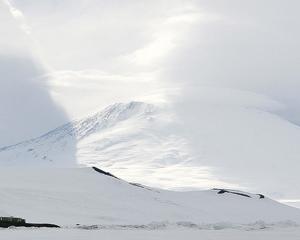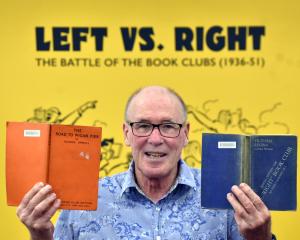Neil Gaiman returns to a favourite subject.
NORSE MYTHOLOGY
Neil Gaiman
Bloomsbury
By GREG WAITE
Prolific, popular, and versatile, Neil Gaiman revisits one branch of his mythic influences in this retelling of Norse tales.
The stories run from the beginnings of creation, and the first living being - the giant Ymir, formed out of the primal soup of foamy ice, thawed by the fires of Muspell - to the final cataclysm of Ragnarok, when gods, men, and monsters battle for the last time.

These events bracket the births and adventures of the gods, with a particular focus on three: Odin, the one-eyed god of wisdom, poetry, and heroic warfare; Thor, the (less wise) hammer-wielding battler of giants; and Loki, the trickster, and ultimately, the evil-doer.
In his introduction, Gaiman declares his particular liking for the Norse myths, when they are put alongside other legends of gods and heroes from around the world, and he tells of his early childhood encounters with them in the "Mighty Thor'' comic books, and then in the more scholarly retellings by Roger Lancelyn Green.
Gaiman's allusions to Norse myth pervade his work, and are perhaps best known from his novel American Gods, in which a central character, Wednesday, is revealed as the Norse Odin, the god of many names.
This year will see the release of a television adaptation of Gaiman's American Gods, developed by Bryan Fuller and Michael Green. The release of Norse Mythology is therefore timely.
The title is plain, his prose lean and spare, and his treatment of his sources quite conservative. Much of what we know of Norse mythology comes from two main sources: the Poetic Edda, a collection of mythological and heroic poems (most dating from the 10th to 12th centuries, written down in Iceland around the 1270s), and the Prose Edda, a compilation by the Icelandic chieftain Snorri Sturluson (1179-1224), a historian and poet.
In writing his Edda, Snorri's aim was to preserve and explain the old mythological references that underpinned the figures of speech in the living tradition of skaldic poetry, which continued to be practised in Iceland long after the conversion to Christianity around the year 1000.
Snorri pieced together a coherent compendium of mythology gleaned from the sometimes obscure and allusive references in Eddic poems like the "Voluspa'' ("prophecy of the seeress''), retelling them in lively prose, with strains of comic irreverence, yet affection.
Gaiman sticks quite closely to Snorri in style and content, but turns to other sources for a few tales. The story of how Thor's hammer was stolen, and how he had to enter the realm of the giants to recover it in female disguise as the "bride'' Freyja, is told only in the poem "Thrymskvitha''. The tone and situation of the poem are strikingly similar to Snorri's own style, and the fact that Snorri does not repeat the story in his Prose Edda has led some scholars to suspect that he wrote it himself.
Some of Snorri's accounts can be corroborated from earlier and distant sources. The story of Thor's fishing expedition with the giant Hymir to catch the "World Serpent'' (which encompasses the land), is depicted on a carved stone at Gosforth in northern England dating from the early 10th century.
From the same church site, probably founded by a Christianised Viking settler who commissioned the carvings, there survives a tall stone cross with depictions of the old gods in combat with monsters during Ragnarok.
In his somewhat slimmed down and streamlined account of Norse mythology, Gaiman has entertainingly passed on the traditions preserved by Snorri.
One hopes that some readers at least will be inspired to go back to the master storyteller himself, and to drink more deeply from Mimir's well of wisdom.
Greg Waite lectures in English at the University of Otago.












